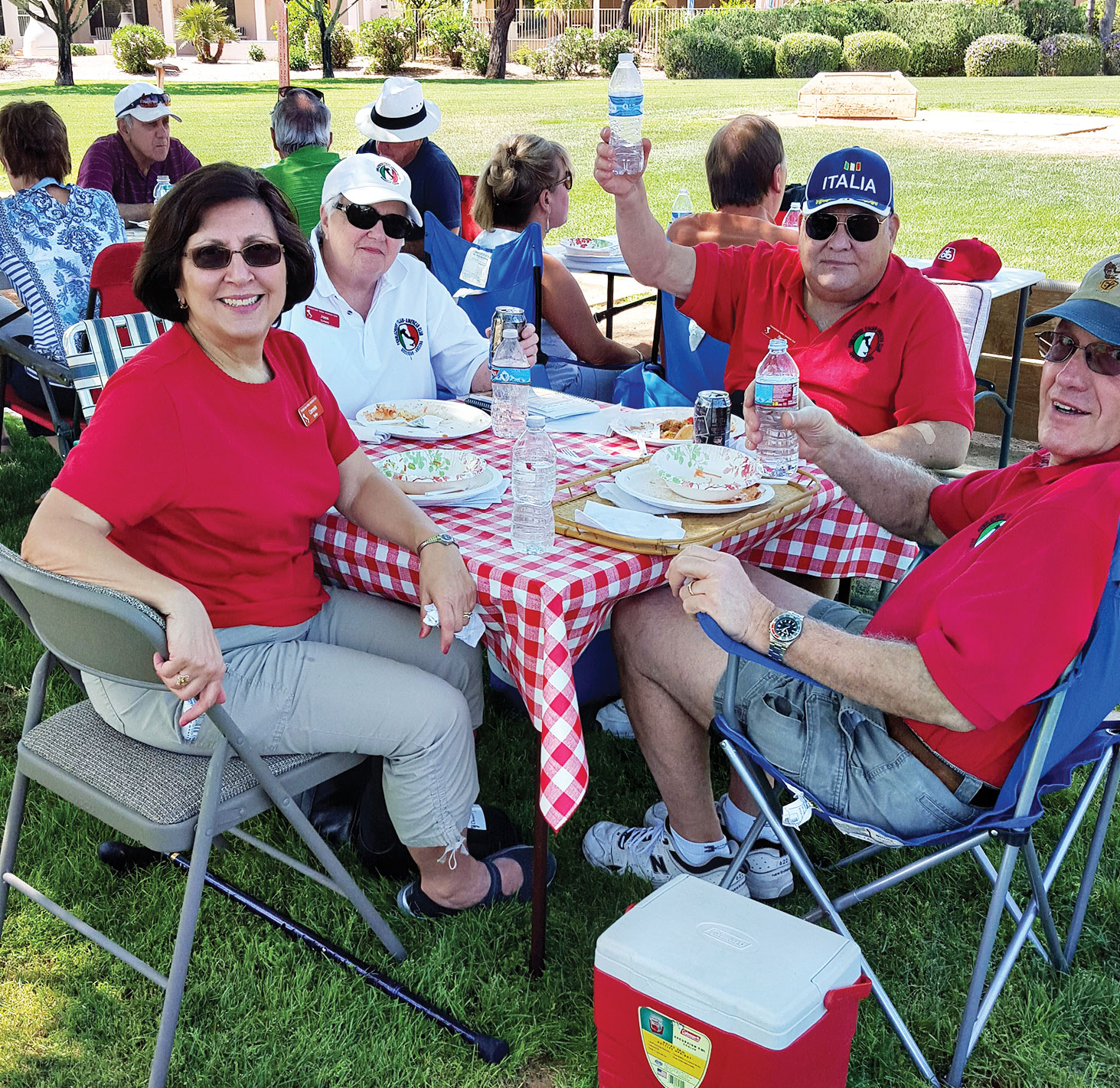 Jim Roberts
Jim Roberts
The PebbleCreek Italian–American Club celebrated St. Joseph’s Day with a feast at Sunrise Park March 19, 2016. The feast in honor of the foster-father of Jesus Christ is celebrated by Catholics and the Anglican and Lutheran churches worldwide.
In the Catholic tradition, March 19 falls during Lent and is a day of abstinence. Tables are usually covered with meatless dishes. Our predominant dish was eggplant lasagna, which was delightful and accompanied by veggies and salads. An assortment of excellent cookies was on hand for the dessert. The feast was compliments of the I-A Club and a good crowd was on hand. Not many members of this club would pass up a free meal.
March 19 was dedicated to Saint Joseph in several Western calendars by the tenth century and this custom was established in Rome by 1479. Pope St. Pius V extended its use to the entire Roman Rite by his Apostolic Constitution Quo primum (July 14, 1570). Since 1969 Episcopal Conferences may, if they wish, transfer it to a date outside Lent.
In the United States New Orleans, Louisiana, which was a major port of entry for Sicilian immigrants during the late nineteenth century, the Feast of St. Joseph is a city-wide event. Both public and private St. Joseph’s altars are traditionally built. The altars are usually open to any visitor who wishes to pay homage. The food is generally distributed to charity after the altar is dismantled.
Saint Joseph’s Day is also celebrated in other American communities with high proportions of Italians such as New York City, New York, Hoboken, New Jersey, Jersey City, New Jersey, Kansas City, Missouri and Chicago, Illinois, Gloucester, Massachusetts and Providence, Rhode Island, where observance (which takes place just after Saint Patrick’s Day) often is expressed through “the wearing of the red,” i.e., wearing red clothing or accessories similar to the wearing of green on Saint Patrick’s Day. St. Joseph’s Day tables may also be found in Rockford and Elmwood Park, Illinois.
St. Joseph’s Day is also the day when the swallows are traditionally believed to return to Mission San Juan Capistrano in California after having flown south for the winter.
